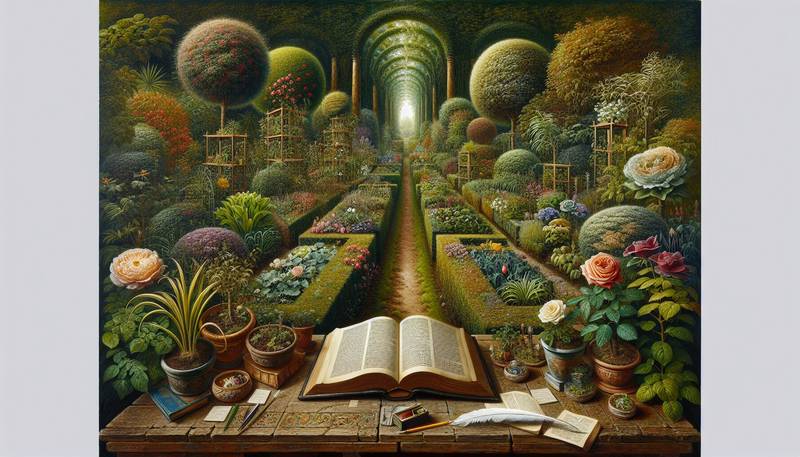Blooming Books: Literary Inspired Plantings

When Literature Meets GardeningThere’s something magical about books that can make even the most timid plant tremble with excitement. Imagine a world where your favorite characters sprout from the soil, their stories intertwining with the roots of real-life greenery. This isn’t just a daydream; it’s a reality that can flourish in your own backyard. Welcome to the delightful concept of literary-inspired plantings, where every flower, shrub, or tree has a story to tell.Picture this: you venture into your garden, ready to prune. Instead of clippers, you're wielding a quill, clinging to your latest read as you whisper the plot to your roses. With the right selection, your garden could mimic a novel landscape—an enchanting blend of fiction and flora! Shakespearean SproutsLet’s dive into Shakespeare, the Bard himself, whose influence can easily take root in your garden. For instance, did you know that the sweet-smelling herb *rosemary* was thought to be a favorite of the bard? It symbolizes remembrance—perfect for those long afternoons of contemplating life, love, and why your neighbor’s hedge is so much taller than yours. To embrace this theme even further, consider adding: - *Daisies* for innocence—ideal for those who insist on turning everything into a metaphor.
- *Thyme* for courage—because every gardener needs a little bravery when facing a particularly stubborn weed.
- *Violets* for loyalty—perfect for the loyal friends who decided to help you weed, only to realize they signed up for a marathon.
Together, these plants could create a romantic homage to the great playwright—a garden not just of flowers, but of poetic lamentations for your inbox filled with unread emails.Hemingway and the Great OutdoorsFor those with a more adventurous spirit, let’s not forget about Ernest Hemingway. His tales of struggle, nature, and the wild could inspire a garden that’s as rugged and sprawling as one of his novels. Picture a section dedicated to hardy plants, resistant to all that life throws at them (including the occasional errant squirrel). Consider: - *Cacti* for resilience—just like Hemingway’s heroes, these prickly guys endure the harshest conditions without shedding a tear.
- *Lavender* for tranquility—the soothing scent reminds one of calm afternoons spent fishing, minus the inevitable drama of a hooked finger.
- *Sunflowers* representing strength—because who wouldn’t want to grow tall and proud, much like a character who refuses to back down in the face of adversity?
Your Hemingway-inspired garden could be a testament to wild pursuits, filled with plants that can weather any storm while still looking good in a summer breeze.Fantasy FloraJ.K. Rowling’s world of magic brings us to another whimsical garden possibility. Imagine planting *Mandrakes* (if you dare) alongside *Dittany* for healing. And who could resist a sprinkling of enchanted flowers that bloom under the light of the full moon—a perfect tribute to a world where anything is possible?Consider these magical additions: - *Foxgloves* for a touch of enchantment—no wand required, just a little sprinkle of imagination.
- *Buttercups* to attract the fairies—because what garden is complete without a few mischievous sprites causing a ruckus?
- *Moonflowers* that only bloom at night—perfect for those late-night reading sessions under the stars.
This garden could become a portal to a land of enchantment, where every bloom opens a new chapter of adventure.A Final Word on Planting DreamsPlanting a garden inspired by literature isn’t just about arranging flowers; it's like setting the stage for a performance, where every plant plays its part. The leaves rustle in applause, the flowers sway to the rhythm of the wind, and every time you step outside, you’re greeted by a story waiting to unfold.So, when you dig your hands into the soil and breathe in the earthy scent of nature, remember: it's not just gardening; it's a plot twist waiting for its next chapter. Each seed you plant carries the legacy of the stories you love, blooming into a narrative of its own—one that grows right under your nose, and maybe even shouts “Read me!” between the petals.
|
|







